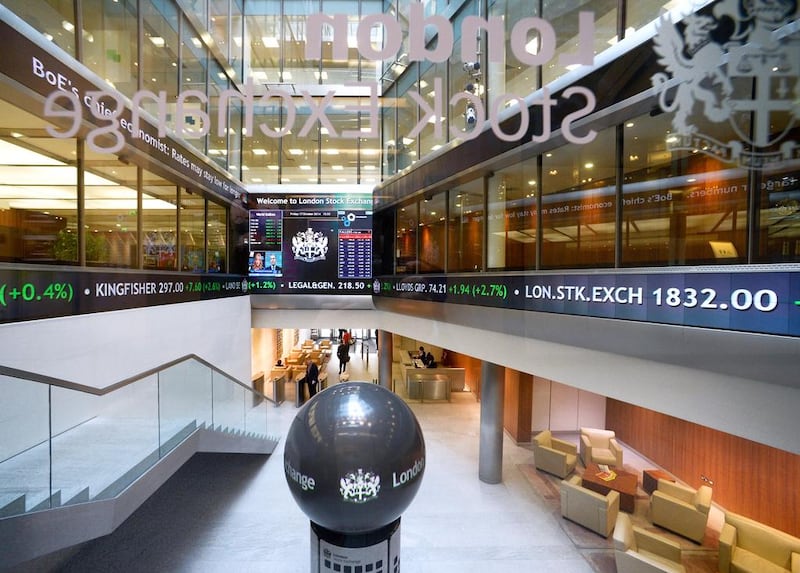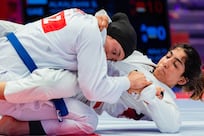Have you ever fancied investing in a hedge fund? Well you can, provided you have US$500,000 at your disposal.
That is the minimum investment demanded by some hedge funds. Other managers expect a cool $1 million. Some set the bar even higher.
Clearly, investing in hedge funds isn’t for everybody. But is there another way of doing it?
Private investors of relatively limited means who want to buy into the hedge fund mystique can do so from just a few dollars.
A small number of hedge fund managers offer funds that are openly traded on the stock market.
Alternatively, you could actually invest in the publicly-quoted shares of several hedge fund managers.
But first, don’t get carried away, hedge fund performance can be highly variable.
Investors fled the sector following the financial crisis, when scores of funds collapsed altogether.
Despite their cavalier reputation, many hedge funds are low-risk vehicles designed primarily to preserve the capital of their wealthy investors.
Dan Dowding, chief executive (Middle East & Asia) at IFAs Killik & Co in Dubai, says the first funds were designed to “hedge” stock market risk.
Hedge funds remain the domain of the mega-wealthy, but Mr Dowding says more modest investors can access hedging strategies through a fund of hedge funds, or a spin-off product known as the absolute return fund.
Mr Dowding adds: “Funds that are available to private investors have the added advantage of daily liquidity, and tend to avoid taking the stupid bets that funds that are closed to the general public can potentially take.”
If you are tempted, Mr Dowding suggests gaining exposure via funds that investors can easily buy and sell through the London Stock Exchange, such as BH Macro, Blue Crest All Blue and Odey Swan.
“Stock markets have been on a six-year bull run but that won’t last forever,” he says. “The case for hedge fund exposure becomes stronger the longer the bull run continues, because it has to end at some point.”
Some investors may be tempted to make a play on hedge funds by investing in the quoted shares of the companies behind these vehicles, such as BlackRock and Blackstone.
But Jim Wood-Smith, head of research at Hawksmoor Investment Management, says this is a poor way to gain hedge fund exposure. “For large asset managers whose shares are easily tradable, running hedge funds is just one part of what they do.”
David Norton, head of investments at AES International, warns that investing in the individual stocks of hedge funds is also risky. “You lose some of the benefits of investing in hedge funds, such as non-correlation to the wider stock market, while heightening your equity risk.
“But if you have thoroughly researched the company then as with any share purchase, there is the potential for decent upside,”
Man Group, which also trades in London, is one of the largest publicly quoted hedge fund managers in the world and a tempting entry point.
Helal Miah, investment research analyst at The Share Centre, says Man Group’s computer-driven investment strategy flopped after the financial crisis and investors left in droves.
But its AHL Quant range of funds are growing strongly and investors are streaming back.
Man Group’s share price has soared 65 per cent in the past 12 months, although it is still 32 per cent lower than five years ago.
Mr Miah tips Man Group as a buy for investors willing to accept a medium level of risk. “Its shares trade at roughly 17 times forward earnings, in line with other asset managers, and we will believe earnings will continue their recovery path.”
Patrick Connolly, certified financial planner at IFAs Chase de Vere in London, says most investors can leave hedge funds happily alone. “They may provide diversification and some degree of protection if markets fall, but they are complex, lack transparency, have high charges and deliver variable performance.”
For private investors, a type of mutual fund called an “absolute return fund” may do a similar job more cheaply and easily.
These use complex instruments such as derivatives to deliver a steady return, year after year.
However, there is no guarantee that you will always get a positive return, and performance has been variable.
“We recommend very few absolute return funds,” Mr Connolly says.“The exceptions are Kames UK Equity Absolute Return and Standard Life Investments Global Absolute Return Strategies, which both use hedge fund techniques.”
Kames has delivered a total return of 16 per cent over the last five years, while the Standard Life fund has delivered 30 per cent.
That may look distinctly average, but they can still be practical to way to balance riskier holdings in your portfolio. In other words, hedge.
What are hedge funds all about?
Few investments can match the exotic glamour of hedge funds, and fewer are more misunderstood.
To most people, hedge funds are engines of fabulous wealth, run by billionaire investment gurus such as George Soros, the man who famously broke the Bank of England, and John Paulson, who bet against the subprime housing market before the credit crunch.
Some do take high-risk bets, such as the notorious Long Term Capital Management fund, founded in 1994 by John Meriwether, which ran up $4 billion of losses during the Russian bond crisis in 1998 and had to be bailed out by the US Federal Reserve.
The truth is that the vast majority of hedge funds are low-risk “hedging” operations designed to protect what wealthy people already have rather than make more of it.
But most of us prefer to believe the exotic myths about the hedge fund market, now worth a colossal $3.125 trillion.
Hedge funds attracted $12.2 billion of investors’ money in April alone, taking the total to $38.7 billion in the first four months of this year, according to the latest Global Hedge Fund Asset Flows Report from eVestment.
But they underperformed in 2014, with an average return of 2.27 per cent, against 13.69 per cent on the US benchmark index for stocks, the S&P 500.
Relative performance has picked up in 2015, with the average hedge fund returning 3.36 per cent in the year to May, against 3.24 per cent on the S&P 500.
Given the scale and diversity of the hedge fund sector, performance varies dramatically.
China-focused funds, for example, are up nearly 26 per cent year-to-date, while Brazil funds are down more than 13 per cent.
Russia has been extremely volatile, hit by commodity and geopolitical risks, but the market has still risen 26 per cent year-to-date.
Hedge funds can be risky, don’t guarantee outperformance, and are expensive to buy and hold.
Many operate the “2-20” fee structure, with typical annual fees of 2 per cent a year, plus 20 per cent of any profit as an incentive fee.
Hedge fund managers may be super-rich, but there is no guarantee that they will make you rich.
Three ways to play hedge funds
Dan Dowding at Killik & Co in Dubai picks out three funds that investors can easily buy and sell through the London Stock Exchange:
BH Macro
Brevan Howard Asset Management, a global alternative asset manager, launched a hedge fund called BH Macro in 2007 that can easily be bought and sold by private investors.
This is a “closed-ended” fund, registered in Guernsey, which means it is actually an investment company that can be bought and sold like any other stock.
BH Macro aims to deliver consistent long-term growth by investing in global fixed-income and foreign exchange markets. It can do this by investing in a range of complex instruments, including debt securities, bank loans, listed and unlisted equities, currencies, commodities, futures, options, warrants, swaps and other derivatives. It can also use shorting strategies.
Mr Dowding says long-term performance since launch has been good. “Since 2007, BH Macro has returned 110 per cent in total. By comparison, the FTSE 100 grew 9.2 per cent over the same period, excluding dividends.”
Recent performance has been mixed. Over the past five years, it returned 18 per cent, and 7 per cent over the past 12 months.
You can buy the stocks in US dollars, sterling or euros, and the current price is about $20 a share.
Blue Crest AllBlue
Mr Dowding’s next choice, the BlueCrest AllBlue Fund, is a closed-ended investment company registered in Jersey that aims to generate attractive returns regardless of wider market performance.
The fund invests across seven underlying funds from the hedge fund manager BlueCrest Capital Management.
Mr Dowding says: “It offers the potential for better returns than cash with the potential for even higher returns if asset volatility increases.” Over five years, it has delivered a total return of 15 per cent. That may look disappointing compared to the FTSE 100, which grew 27 per cent over that time, and the S&P 500, which doubled.
But BlueCrest AllBlue Fund is a lower risk fund that aims to preserve investors original capital.
Again, it trades in London in sterling and dollars, with a current share price of $1.82.
Odey Swan
Mr Dowding’s final pick is the Odey Swan Fund, an open-ended investment fund domiciled in Dublin.
Launched by the star fund manager Crispin Odey in 2013, it aims to deliver long-term capital growth from a portfolio of equities, bonds and currencies.
Mr Dowding says: “Odey has the flexibility to rotate the portfolio across asset classes that he believes will offer the best opportunities at any given time, and take both long and short positions.”
Odey’s investments are “an eclectic mix of pure macro plays, potential recovery situations and ‘interesting’ ideas”, Mr Dowding says. This fund has proved volatile since launch. It is down 3 per cent over the past 12 months, but fallen almost 20 per cent in the past three months. It currently trades in London at around £95 a share.
pf@thenational.ae
Follow us on Twitter @TheNationalPF





